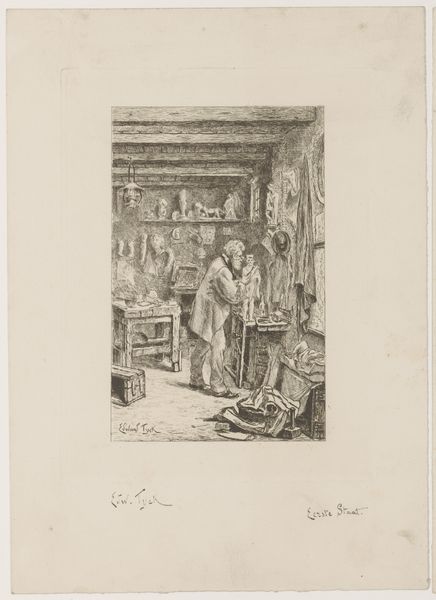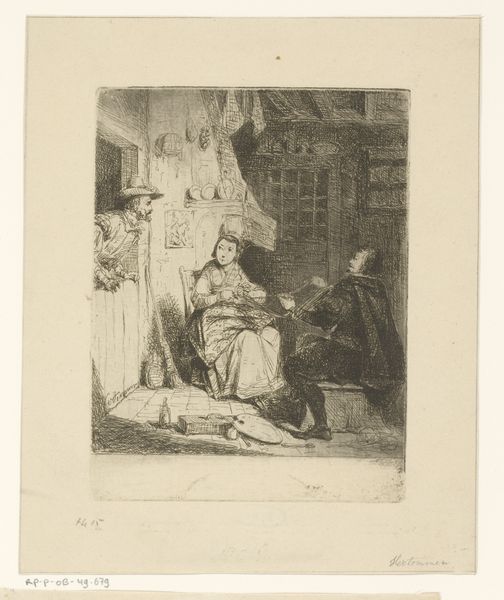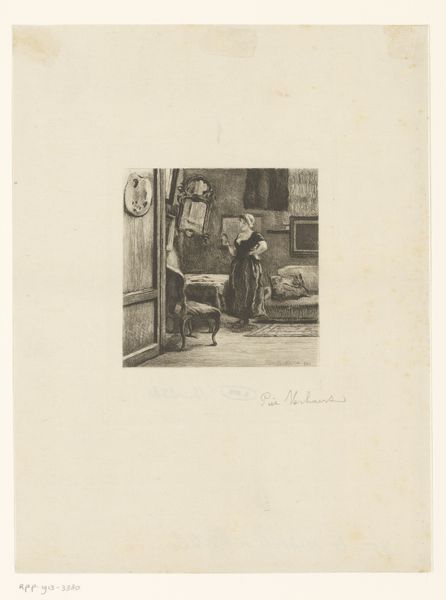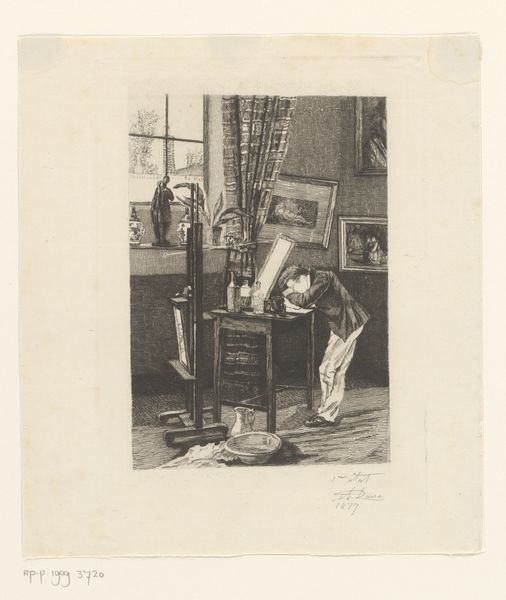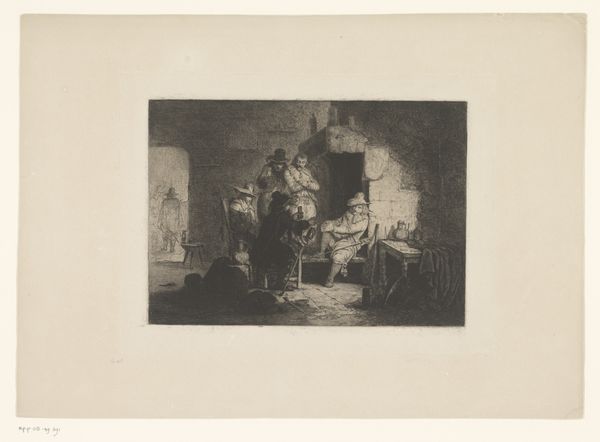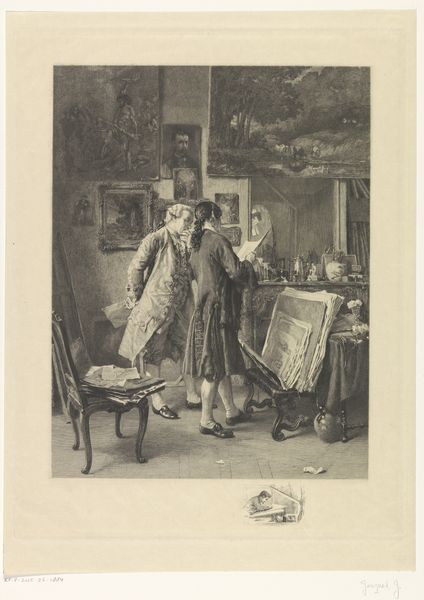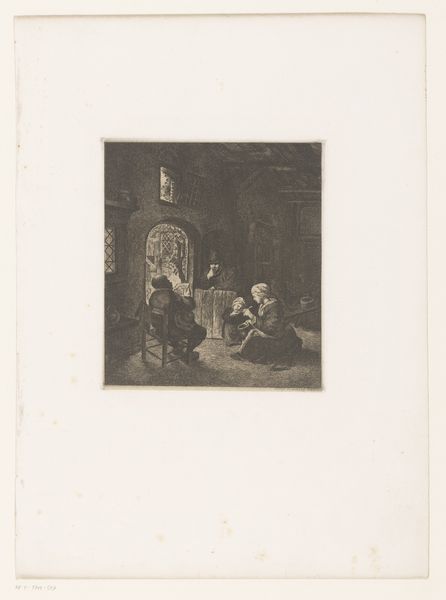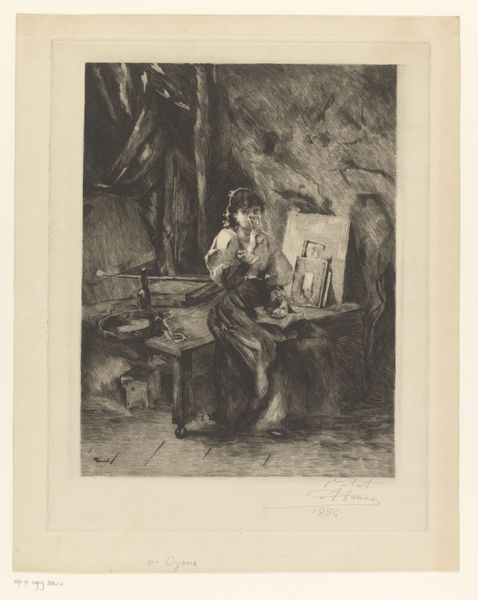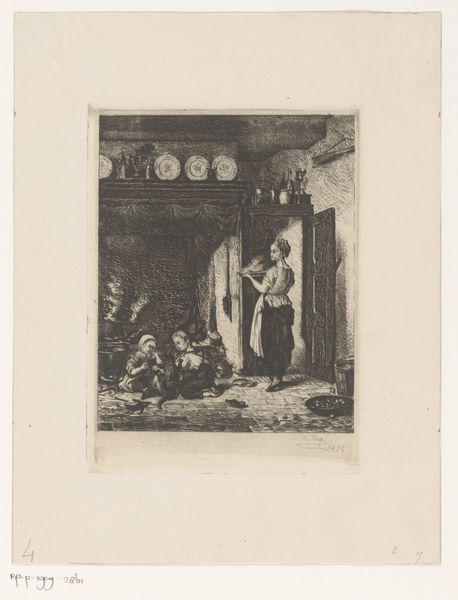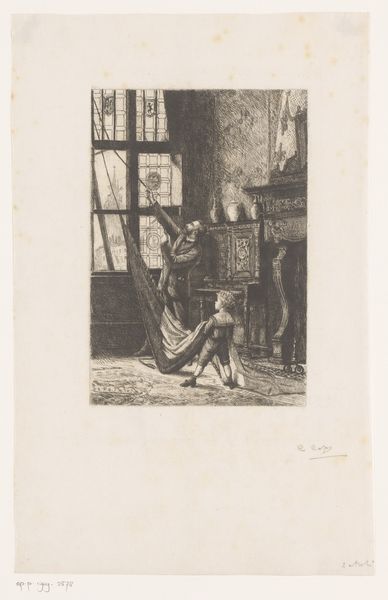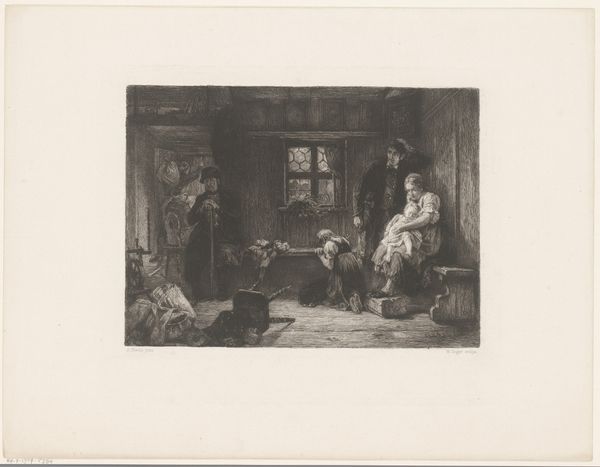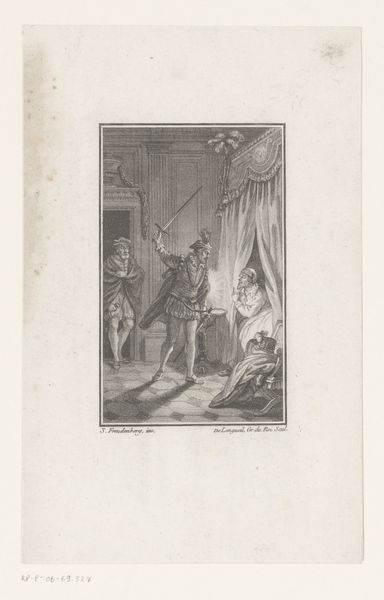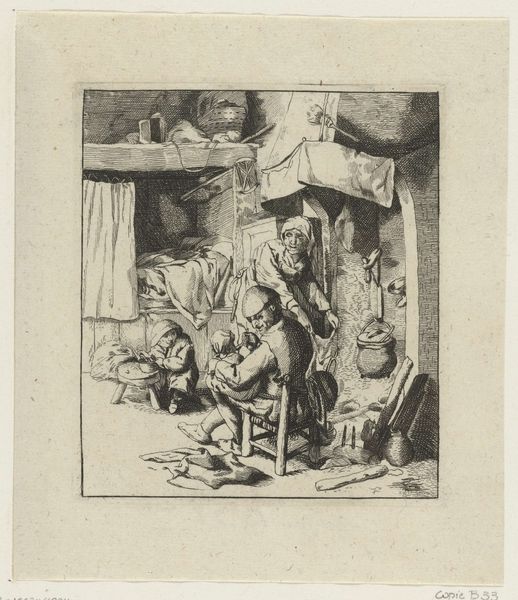
drawing, print, etching, paper
#
portrait
#
drawing
# print
#
etching
#
paper
#
symbolism
#
genre-painting
#
realism
Dimensions: height 271 mm, width 209 mm
Copyright: Rijks Museum: Open Domain
Editor: So, this is Edouard Tyck's etching, "Sculptor in his Studio," made in 1892. It’s a pretty detailed print on paper. I'm immediately drawn to the sheer amount of stuff in the sculptor's workshop! What grabs your attention most? Curator: It’s the means of production, of course! The artist depicts another artist, emphasizing labor and process. We see the sculptor actively engaged with his materials, shaping a figure. It blurs the line between high art and craft by focusing on the tools and the workspace – a far cry from idealized studio scenes, wouldn't you say? Editor: Definitely less romantic than I expected! I see the tools, the sketches on the walls. It makes me think about where he gets his materials... Do you see any social context at play here? Curator: Absolutely. Consider the late 19th century. Industrialization impacted artistic production too. Even a seemingly traditional art like sculpture relies on the availability of specific materials, tools, and perhaps even assistants—the consumption of goods, so to speak. Tyck, by highlighting the mundane aspects of creation, nods to that reality. The studio itself is part of that: is it well lit, roomy or cramped? Editor: That’s fascinating. So, by depicting the "stuff" of the studio, Tyck's revealing a complex web of labor, materials, and economic factors that underlie artistic creation. Almost as if he wants you to look closer, past the finished artwork? Curator: Precisely! It's about more than just individual genius; it’s about the material conditions that enable the art itself, making labor visible, almost forcing one to confront consumption as the lifeblood for making art. It asks us to re-evaluate the creative process from a very different standpoint. Editor: Wow, I never would have thought of that from a single etching! I guess looking closely at process and materials opens up a whole new perspective on art history. Thanks for shedding some light on that! Curator: My pleasure, it's important we think of production, to see who benefits and how art feeds or frees us from such questions.
Comments
No comments
Be the first to comment and join the conversation on the ultimate creative platform.
